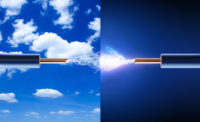First, there was the energy crisis in the 1970s that would reshape the HVAC industry and how we would select the optimum HVAC systems based on the primary heating and cooling resources. Also in the 20th century was the 1987 Montreal Protocol, focusing its efforts on our environment. Between the resulting energy crisis and the Montreal Protocol, electric heat became popular in the 1980s. Electric controls would also have its initial impact over pneumatic temperature controls and would be the precursor to the building automation systems (BAS) that control our HVAC systems today.
While each of these topics can be a discussion on their own, together they encircled HVAC applications and changing technology. With an increased demand for electricity and electrical demand side management together, they would challenge the nation’s utility infrastructure. One of the solutions to balancing the electrical consumption from chilled water plants in sync with electric demand during those years was to embrace thermal energy storage (TES). This helped manage the electrical demands that had been creating brownouts that were due to the growth of the air-conditioning portion of the building industry.
During those years, I had the opportunity to engineer several TES system projects. One TES application consisted of three 275,000-gallon below-grade water tanks that provided pre-cooling of chilled water, serving approximately one million square feet of air-conditioned space. In the heating season, this TES water system would provide low-temperature water to heat the eight-story facility.
I was involved with ice TES applications that included a museum and a few industrial facility applications, all engineered to provide a reduction in electrical demand during the dog days of summer. But in the past several years, I haven’t seen any engineered solutions using the TES application, although I believe it still makes a lot of first cost and operating cost sense to limit peak electrical consumption.
In my February column, I touched upon electrification and decarbonization. I noted that electrical power plants continue to use coal, gas, and oil to generate electricity, but there is hope for achieving electrification and decarbonization without using fossil fuels. To this point, today we are experiencing another surge in energy storage although this time around TES is battery energy storage (BES)!
My son is a project manager for an international BES company, and I had the opportunity to tag along to visit a major battery installation that provides electricity to support electrical demand, as well as be there to provide the surrounding communities with electricity when the utility company electric power grid has been interrupted due to a weather condition, e.g., snowstorm. Driving to the site, which is a stand-alone building where the batteries are stored, we discussed TES and BES. Other projects he is involved with are solar panel fields and wind farms where the electrical power is generated and then stored in batteries for a few different applications based on the design intent. These solar and wind applications with BES provide decarbonized HVAC systems.
BES facilities make sense in the HVAC industry, helping to capture available solar energy on sunny days and wind energy 24 hours a day depending on the weather. This energy, in the form of electricity, can supplement electrical hourly consumption, provide stored electricity when utility company distribution networks are interrupted, and provide stored electricity to curb and/or limit electrical demand. While heating water from TES applications did not make a significant impact on the HVAC building industry in the past, chilled water and ice TES applications did have a significant impact at times. Ice TES still has an energy management value today in contributing to the electrical demands of the air-conditioning season.
Referring back to my February column, “Design Engineering: Practice What You Preach,” if we in the building industry are truly committed to decarbonization and electrification in our HVAC system designs, BES should be more than just a passing thought when following the 2020 ASHRAE Handbook-HVAC Systems and Equipment, Chapter 1-HVAC System Analysis and Selection, Chapter 2-Decentralized Cooling and Heating, and Chapter 3-Central Cooling and Heating Plants.




